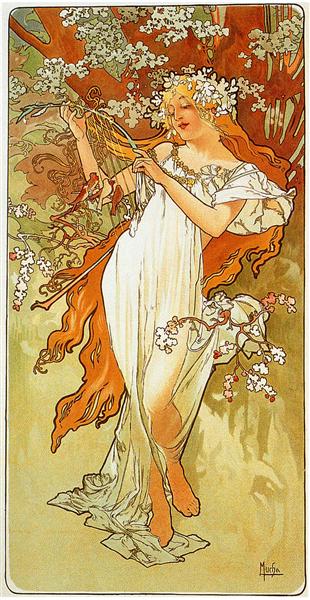
Art Nouveau
Art movement
artwork Nouveau ( french pronunciation : [ aʁ nuvo ], Anglicised to /ˈɑːrt nuːˈvoʊ/ ) is an external dash of art, computer architecture and apply art, specially the cosmetic arts, that was most democratic between 1890 and 1910. A reaction to the academic artwork of the nineteenth hundred, it was inspired by natural forms and structures, particularly the curved lines of plants and flowers.
English uses the french name Art Nouveau ( new art ). The vogue is related to, but not identical with, styles that emerged in many countries in Europe at about the lapp clock time : in Austria it is known as Secessionsstil after Wiener Secession ; in spanish Modernismo ; in Catalan Modernisme ; in Czech Secese ; in Danish Skønvirke or Jugendstil ; in German Jugendstil, Art Nouveau or Reformstil ; in Hungarian Szecesszió ; in italian Art Nouveau, Stile Liberty or Stile floreale ; in norwegian Jugendstil ; in Polish Secesja ; in Slovak Secesia ; in russian Модерн ( Modern ) ; and in swedish Jugend.
Art Nouveau is a full art style : It embraces a wide range of fine and cosmetic arts, including architecture, painting, graphic artwork, department of the interior invention, jewelry, furniture, textiles, ceramics, methamphetamine art, and alloy function.
By 1910, Art Nouveau was already out of style. It was replaced as the dominant european architectural and cosmetic dash inaugural by Art Deco and then by Modernism.
Art Nouveau took its list from the Maison de l’Art Nouveau ( House of the New Art ), an art gallery opened in 1895 by the Franco-German art principal Siegfried Bing that featured the new stylus. In France, Art Nouveau was besides sometimes called by the british terminus “ modern Style ” due to its roots in the Arts and Crafts movement, Style moderne, or style 1900. It was besides sometimes called style Jules Verne, Le Style Métro ( after Hector Guimard ‘s iron and glass metro entrances ), Art Belle Époque, and Art flipper de siècle.
In Belgium, where the architectural drift began, it was sometimes term Style nouille ( noodle style ) or Style coup d’etat de fouet ( whiplash style ).
In Britain, it was known as the Modern Style, or, because of the Arts and Crafts movement led by Charles Rennie Mackintosh in Glasgow, as the “ Glasgow ” style.
In Italy, because of the popularity of designs from London ‘s Liberty & Co department store, it was sometimes called the Stile Liberty ( “ Liberty style ” ), Stile floral, or Arte nova ( New Art ).
In the United States, due to its association with Louis Comfort Tiffany, it was much called the “ Tiffany expressive style ”.
In Germany and Scandinavia, a relate stylus emerged at about the lapp time ; it was called Jugendstil, after the popular German art magazine of that mention. In Austria and the neighbor countries then part of the Austro-Hungarian Empire, a exchangeable style emerged, called Secessionsstil in German, ( hungarian : szecesszió, Czech : secese ) or Wiener Jugendstil, after the artists of the Vienna Secession.
In Catalonia the relate style was known as Modernisme ; in Spain as Modernismo, Arte joven ( “ young art ” ) ; and in Portugal Arte nova ( new art ). In Russia, it was called Modern ( Модерн ар-нуво ), and Jugendstil ( Югендстиль ), and Nieuwe Kunst ( new art ) in the Netherlands.
Some names refer specifically to the organic forms that were popular with the Art Nouveau artists : stile Floreal ( “ floral style ” ) in France ; Paling Stijl ( “ eel manner ” ) in the Netherlands ; and Wellenstil ( “ wave vogue ” ) and Lilienstil ( “ lily style ” ) in Germany.
This is a part of the Wikipedia article used under the creative Commons Attribution-Sharealike 3.0 Unported License ( CC-BY-SA ). The full moon text of the article is here →


